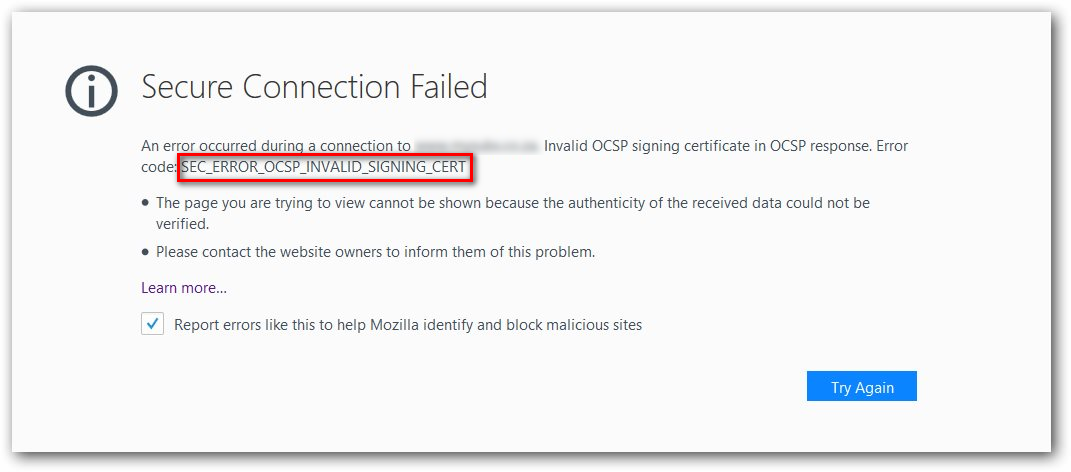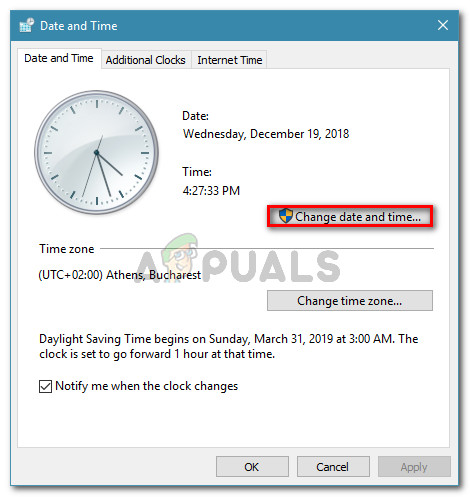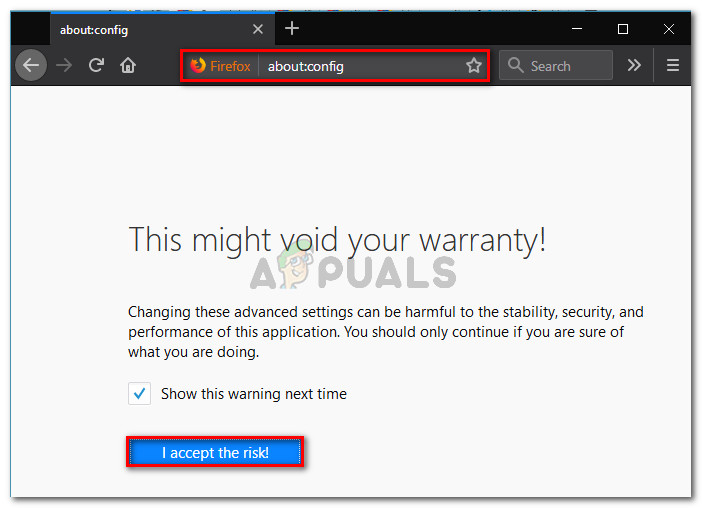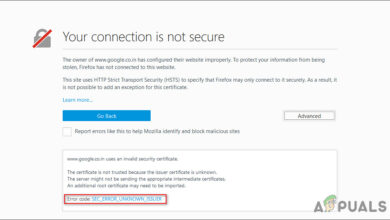Fix: SEC_ERROR_OCSP_INVALID_SIGNING_CERT
Several Mozilla Firefox users are complaining about receiving a Secure Connection Failed prompt with the error code “SEC_ERROR_OCSP_INVALID_SIGNING_CERT” when trying to access one or several web pages. This particular error code is exclusive to Mozilla and is reported to on several different Windows versions (most commonly on Windows 7 and Windows 10).

What causes the SEC_ERROR_OCSP_INVALID_SIGNING_CERT error?
We investigated this particular issue by looking at various user reports and the strategies that they used to circumvent the error message. As it turns out, there are a couple of scenarios that are known to produce this particular error message:
- The security certificate of the website you’re trying to access is invalid – Most of the time, the reasons for this issue are beyond your control and should be resolved by the administrator of the website that you’re trying to visit.
- Date and time are outdated – This particular error code is also reported to occur if the machine trying to access the server has the wrong date and time.
If you’re currently trying to resolve the SEC_ERROR_OCSP_INVALID_SIGNING_CERT error, this article will provide you a couple of troubleshooting guides. Down below, you’ll find a couple of methods that other users in a similar situation have used to get the issue resolved.
Note: We urge you to follow the methods below in the order that they are presented.
Method 1: Setting the correct date & time
A lot of users have reported that the error message was resolved and they were able to access the website normally after they modified the Date and time settings to the current values.
If your date & time settings are severely outdated, the web server you’re trying to access will refuse the connection for security reasons. Here’s how to ensure that you have the correct date & time settings:
- Press Windows key + R to open up a Run dialog box. Then, type “timedate.cpl” and press Enter to open the Date and Time window.

Opening the Date and time window - Inside the Date & Time window, go to the Date and time window and click on Change date and time.

Setting the correct date and time - In the Date and Time Settings window, use the calendar under Date and the Time box to set the appropriate values according to your time zone.

Modifying Time & date - Restart your computer and visit the website again at the next startup to see if the issue has been resolved.
If you’re still encountering the SEC_ERROR_OCSP_INVALID_SIGNING_CERT, move down to the next method below.
Method 2: Disabling OCSP Stapling
Another common cause for the SEC_ERROR_OCSP_INVALID_SIGNING_CERT error is if the OCSP security connection mechanism fails for one reason or another.
Although it’s not recommended, you can circumvent the issue by instructing Firefox to skip this security procedure entirely. Just remember to reverse engineer the steps below once you are done using the website in question.
Here’s what you need to do:
- . Open Firefox, type “about:config” and press Enter to enter the advanced settings of Mozilla Firefox. At the security prompt, click the I accept the risk! button.

Entering the advanced settings of Microsoft Firefox - In the search box, paste the following preference name and hit Enter to locate it:
security.ssl.enable_ocsp_stapling

Locating the security.ssl.enable_ocsp_stapling preference value - Double-click on security.ssl.enable_ocsp_stapling to change it’s Value to false.

Disabling OCSP Stapling from the Config menu of Firefox - Restart your browser and see if the issue has been resolved.
Note: Keep in mind that an OCSP connection (just like an HTTP connection) can be affected by add-ons and ad-blockers. If the error message is still not fixed or you’re encountering a different one, try to disable every active add-on and then re-enable them systematically until you discover the culprit.





